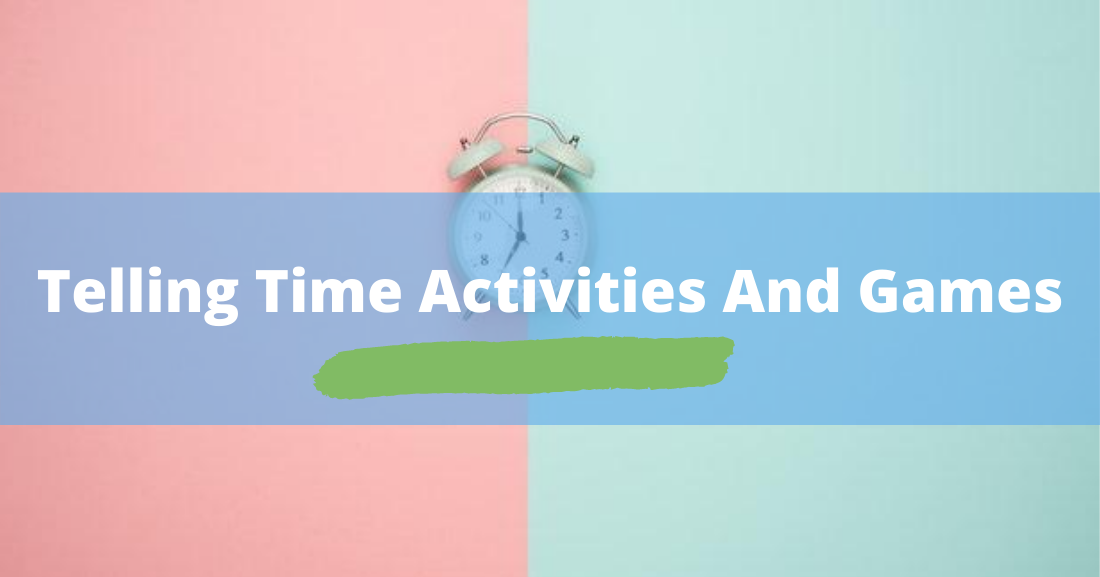
Telling time can be tricky for some students so it is important that they have a very strong grasp on numbers before trying to proceed with this lesson. Depending on the age of your students, they may struggle because they have not learned to tell time in their native language so teaching general references to time such as ‘in the morning’ and ‘at night’ would be more beneficial.

How To Proceed
-
1
Warm up
Get your students in a numbers frame of mind by doing some pronunciation practice. Only the numbers one through fifty-nine are going to be used but review zero through one hundred anyway. A game or two of bingo would be good practice. Give students a five by five grid with the center square filled in. Ask them to write any numbers zero through one hundred in the remaining squares, say random numbers (starting with the one already filled in) and play until a few students have gotten bingo. -
2
Introduce – Time: Hours
Draw a clock face on the board to demonstrate. Start by showing times such as 7:00 and 11:00 and writing them on the board next to clock faces. Check to ensure that your students understand that the short hand indicates the hour and should be both said and written first. Have students repeat “One o’clock, two o’clock…” after you. Ask students to come to the board to both write and draw times you give them. For example, say “Rachel, it is 9 o’clock.” The student should write 9:00 and draw a clock face indicating that time. -
3
Introduce – Time: Minutes
Move on to minutes. Show that there are sixty minutes in an hour and that the long hand indicates minutes which should be said and written after the hour. Now demonstrate times such as 8:10 and 3:42 just as you did for hours in the previous step. Ask students “What time is it?” after drawing new clock faces on the board. Ask a student “What time is it?” while pointing to the clock in your classroom. See if there are any volunteers to draw clock faces on the board and ask the class what time it is. Make sure your students understand that “It’s 8:10 o’clock.” is incorrect. -

-
4
Practice – Time
Have a worksheet prepared with a section containing clocks showing various times. Ask the students to complete this section independently and check the answers as a class. If students are struggling, more practice may be necessary. In the second section ask students to draw in the hands of the clock and then ask their partners “What time is it?” -
5
Introduce – Time: Vocabulary
Once your students have a basic grasp on numbers and telling time, introduce time related vocabulary such as those listed below:
- a quarter past
- It’s a quarter past 4.
- half past
- It’s half past 9.
- a quarter to
- It’s a quarter to 12.
- AM
- It’s 7:50 AM.
- PM
- It’s 11:20 PM.
- noon
- midnight
Your textbook will determine what exact vocabulary you need to cover. Practice pronunciation of all the new words and ask students to tell you the time shown on the board in two different ways. For example “It’s 7:15. It’s a quarter past 7.” Extensive drilling and practice activities are necessary at this stage. -
6
Practice – Time
Continuing the worksheet used above, students can match sentences with clock faces or even with images. For example “It’s 9:30 AM” might match up with an image of a student at school while “It’s midnight” would go with an image of a person sleeping. -

-
7
Production – Time
Teach your students the model dialogue below:
- A: Excuse me. What time is it?
- B: It’s 9:30.
- A: Thank you.
- B. You're welcome.
Have students practice this dialogue in pairs using clock faces drawn on the board or printed on their worksheets. Students should take turns being A and B. After five to ten minutes of practice ask for students to demonstrate the conversation to the class in order to ensure that students are correctly saying the time that corresponds with each image. -
8
Review
To end the class use another short activity to review what has been covered in class. Ask students to tell you the time shown on the board, translate phrases, and ask for the time to ensure that students are comfortable using all the new material and review anything that gives them difficulty both before the class ends and at the beginning of the next lesson. To build upon this lesson, the following lessons may be based around the structures “What time do you ~?” and “I ~ at 7:30” which practices both time and the simple present quite extensively.
General references to time such as at night, in the morning, and on Sunday come up quite often in ESL classes while specific times such as 9:35 do not. Be aware of the fact that students will need practice telling time throughout the course of their studies so during warm up activities or on worksheets try to include specific times regularly.
P.S. If you enjoyed this article, please help spread it by clicking one of those sharing buttons below. And if you are interested in more, you should follow our Facebook page where we share more about creative, non-boring ways to teach English.







